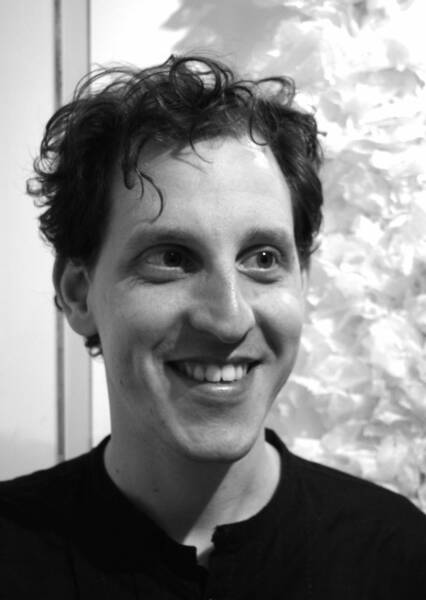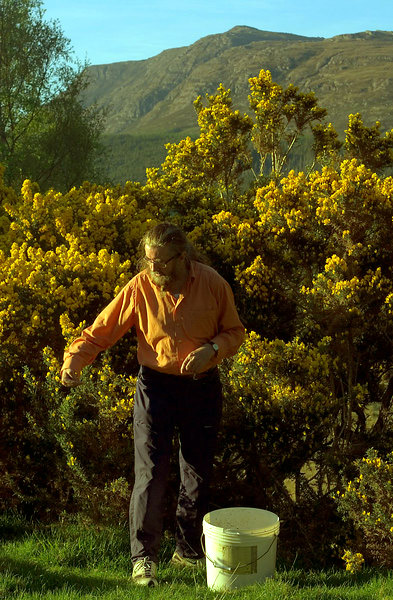March 9, 2008
natural perfumer, passion, fragrance addiction, fragrant fantasies, musk, natural and niche perfumery,
tuberose, spirituality of fragrances, the deep psychology of fragrance, Irish explorations in perfumery and looking for perfume clues in James Joyce’s Ulysses.
We also feature reviews of his fragrances by Prince Barry. Grab your cup of coffee or tea and enjoy!
Raphaella: Can you describe one thing which you regard as the essence of your perfume style?
That’s an easy one – Personal Perfumes. Visitors to our perfume design studio are often disappointed when they ask me which well-known international perfumes we have created for the big companies – and I answer in the negative. Obviously, if you do not work for Givaudan or IFF or the other ‘biggies’ you are not even in the race for a mass-market perfume.
And I do not work for anyone – we are an independent studio, in the tradition of Edmond Roudnitska; to whose philosophy of perfume we subscribe (and readers – if you have neither read some of his thoughts on perfume nor visited the site of his studio in the solitude of the hills above Grasse – do find time to do this and so realize the vast gap between the tradition of classical French perfumery and what passes for the art of perfumery in the airport perfume emporia).
I would hate to have to make a mass-market perfume; which will be focus-grouped to death; and where the price of every ingredient; even the cheap and cheerful synthetics; is scrutinized by accountants and not perfumers. I am free to use any ingredient; regardless of cost – and I do. I have been creating personal perfumes for clients for over 30 years and this for me is the essence of perfumery. Let me explain by reference to my work today – Friday 29th February.
I sat down with an urbane, well-traveled, lively man from Canada who had booked a personal perfume at our studio. It was a wild day; with the ocean foaming outside the studio and the wind, straight from the Atlantic, trying to knock our building down (it is deep Winter, after all; come Summer we bask in balmy days). Inside it is warm and cozy and you look out through the big windows at the Torridon Mountains, which all day disappeared and re-appeared as the Atlantic squalls came through. My visitor felt exhilarated by the energy and vibrancy of Nature outside our perfume studio; and this was actually my first clue to his perfume preferences.
I use all kinds of methods in creating personal perfumes for clients; from highly structured schemes; such as I use in my London perfume days; through the psychometric-based AromaSciences personal perfume service we have operating in Scent Systems in London, with Hiram Green; through to entirely open-ended sessions where any kind of smell experience can be manifest. Today; with such a highly intelligent and emotionally open client; I instinctively opted for the open experience.
One of the popular events currently in London, are days where affluent
folk work hard all day in the kitchen of some grand restaurant, learning
how to cook gourmet meals. This is a hands-on kitchen experience;
active and doing; and entirely different in psychological satisfaction
from merely having your meal served to you in the restaurant.
The perfume experience today was the equivalent of the active
kitchen experience. We do not sit down in some highly decorated
room to sniff perfumes. We are in a working perfume studio; with
hundreds and hundreds of ingredients in bottles of all descriptions;
lining the many shelves. We make a concession to the 21st
century in having precision electronic balances; but otherwise,
you might be visiting your perfumer in Florence in the 16th century.
How did we do? Well, as we sipped for first coffee; I got some clues.
He enjoyed the great outdoors in Ontario; going alone for a week in
wild forests. So, obviously we would explore some green and also
woody themes; and perhaps even a smoky direction; and certainly we
would look at green mossy odours. Our smell preferences are
a tantalizing combination of Nature and Nurture.
Our smell genes dictate; often in an absolute manner; whether we can
literally detect or not detect a particular class of scent. And on top of
the genetic imperative; we have intensely personal experiences with
smells, giving emotionally rewarding memories which we share with no
other person. How complex and how charming is this art of creating
individual perfumes!
I have devised a kit of diagnostic scent molecules which can sometimes reveal the inner olfactory life of my clients. Today; we made rapid progress with the smell diagnosis. I do not call it a diagnosis with my clients, of course. I explain that I view perfumery as the art of the sense of smell; and we simply elect to go on a smell ‘fishing expedition’ – using smelling strips – and of course using the only valid method in the smell world – blind smelling. My clients have no clue whatsoever about the oils on their strips. I move around the studio; collecting a bottle or two, dipping the strips and then presenting them to my client.
To my surprise; he did not think much of the scent of freshly-cut grass; not even recognizing it as such. He could not smell anything from a human pheromone; even wondering at first whether I had given him a blank strip. A particular rose absolute entirely failed to engage his interest; and he did not recognize it as a rose (I do not ask my clients to name scents; we want to explore their reactions; their feelings and memories – but obviously some people will be able to name a scent).
But the next scent arrow struck home. Galbanum absolute; at just the
minimal concentration; fired his passion for the outdoors, and he spoke
warmly of his many experiences in the wild. It will be obvious to readers
that I had selected this ingredient for its potent green natural theme
(and it is more harmonious and easier to use than the exceedingly
powerful synthetic green pyrazine molecules).
He could not smell a carnation absolute, at first, but could when it
warmed-up on the strip; but it failed to engage his emotional gears.
A synthetic ambergris odorant; a truly wondrous aromatic molecule;
intrigued him; and he came back to sniff it again and again; without
being able to say why he did this.
He enjoyed its ‘atmosphere’. He had no difficult in recognizing vanilla;
but declared that he wanted none of this; and that it was overdone in
American perfumes; in contrast to the subtle approach of the classical
French perfumers.
Next-up on the sniffing agenda; was a full-blown, state-of-the-art pheromone
fragrance which I had recently made for my sniff dating event at the London
Science Museum. He was exquisitely sensitive to the occult animal
goat-like notes; finding them warm and comforting. A particularly rich version
of Hedione brought enjoyment but he could not say why – a common reaction
to this mighty force in contemporary perfumery. Another type of rose absolute
made him smile; because it had such an enchanting green note. Frankincense
slowly, indeed very slowly, worked its charm upon him. Some alkyl,
methoxyphenol molecules began to excite him; with their smoky and peaty
and spicy nuances; reminiscent of sitting around fires in the wilderness.
The first breakthrough on his personal smell agenda happened with cassis. It immediately reminded him of the jam factory near to his home when he was a boy. The warm jammy aspect of the note; at just the right concentration; brought back deliciously happy boyhood memories. Such moments with my clients are truly magical. I now have access to some of their most cherished smell memories. I then walked to the far end of the studio and selected a bottle of fir balsam absolute. Now we really began to light his perfume fires. The combination of sweet jammy notes along with the deep intrinsic woodiness sang siren songs to his scent soul. I now knew what he would select as the odorous backbone of this perfume.
Some of the other olfactory highlights of his scent exploration were also illuminating (to use a visual allusion). A deeply sensual, animal, unsaturated musk – muscenone – charmed him; but such amazing molecules exert complex effects upon us and we could have spent all of the day exploring the charms of this one molecule; at various concentrations. He loved jasmine absolute, but could not identify it; not even recognizing it as a flower; but actually electing to use quite a lot of it in his perfume. A honey aroma molecule brought that peace-of-mind effect which such scent molecules do. A synthetic and powerful cedarwood aroma molecule; unsurprisingly, also induced reveries of quiet evenings in the wild.
The absolute oil from Ylang-Ylang was an odour profile he enjoyed (I suspect that it was the phenolic-medicinal note from this flower which exerted its appeal – cf his reactions, described above, to a particular phenol). A particularly fine ionone mixture charmed him with its rich woodiness; and minor notes of rich raisin fruitiness.
We spent the day exploring many other oils, and eventually, with much intense re-examination of the many strips before him; I guided him towards his final selection of oils; and we composed his perfume together. He, of course; actually had the fun of making it himself.
This was a day of what I call ‘real’ perfumery. I had discovered both the genetic and personal preferences of a singular man. And he went away with his perfume in a classic; hand-made French bottle. This is for me; the essence of perfumery.
All rights reserved 2006-2009. All content belongs to Sniffapalooza Magazine.
All articles by individual writers and contributors, understand and agree that each article that is accepted by the Editor for publication; becomes the property of Sniffapalooza Magazine for the sole purpose of publication for Sniffapalooza Magazine. Articles may be archived for permanent use on the web site for Sniffapalooza Magazine and for future issues. All articles remain the property of Sniffapalooza Magazine for display purposes only.
Raphaella: Talk to us about the mystery of musk.
Raphaella – yet another book! I once wrote a short story on musk’s for New Scientist {The Story of a Stolen Smell - **which had the New York Times contacting me because they thought they had ‘sniffed-out’ an interesting case of a breach of civil liberties.
Musk’s make perfumes. I have just returned from Nepal – where the tiny Musk Deer is under great threat – and I am also starting yet another charity to try and help this innocent victim of both the perfume trade (for hundreds of years until recently) and also Chinese traditional medicine. I want to try and help remote Sherpa communities ranch the musk deer. I think that the international perfume industry should generate funds for this poor beast – so lovely to see in the wild – and now in danger of extinction – after all – the famous French perfume houses have lived off the back of this beast for so long.
Musk – The Legend & Lore of Classical Perfumery
I was in Nepal recently looking for the shy musk deer. The western perfume industry seems to be unaware that this aromatic beast is in great danger of extinction; and I want to start a charity to help encourage ranching of this little animal in the Sherpa region of Nepal. Anyone who might be interested in such a long-term project and involving much fund-raising is invited to contact me.
EXCLUSIVE AMERICAN
INTERVIEW WITH
DR. GEORGE DODD
by Raphaella
Dr. George Dodd of Scent Systems talks to
us at Sniffapalooza Magazine about his being
a chemist turned high-end natural perfumer,
passion, fragrance addiction, fragrant fantasies,
musk, natural and niche perfumery, tuberose,
spirituality of fragrances, the deep psychology
of fragrance, Irish explorations in perfumery
and looking for perfumes clues in James
Joyce’s Ulysses. Dr. Dodd also describes
for us, in great detail “A Day in the life of Dr.
Dodd.” Perfumers and fragrance fans will
delight in his descriptions of ingredients.
When one Google’s Dr. George Dodd, he is everywhere in Europe, and little known in America-I had been interested in him for years and finally had to search him out-I am honored that he graciously allowed this fascinating American exclusive interview. Dr. George Dodd will also be teaching a fragrance course next year-I for one am very interested and will be heading over to Scotland. Look for more information soon regarding his upcoming course.
We start with information on Dr. George Dodd, and his Scent Systems, followed by a fascinating interview with him and finishing with reviews by Prince Barry. If you love fragrance, his interview is a must-read and parts of it are riveting. This makes for great reading for all of our perfumista’s!
Scent Systems
NATURAL PERFUME
Dr. George Dodd is a perfumer, biochemist and the
internationally renowned Aroma Scientist. George
Dodd is also the founding father of electronic nose
technology. He established the UK’s only Smell
Research Group at the University of Warwick in
1971, specialising in 'firsts' to create the world’s
earliest electronic noses. He has since established
an independent perfume studio, providing a bespoke
perfume service. This has kept him busy creating
yet more world firsts, a whisky perfume, a chocolate
perfume, a medical perfume and a perfume therapy
programme for use in the treatment of people with
mental-health concerns.
Dr. George Dodd is also known as one of the best-known perfumers and perfume scientists in the world. He has created fragrances for many international companies and has recently created the world’s 1st range of luxury entirely natural perfumes. When the International French Perfume exhibition came to the UK, he was hired to give talks on perfumery. He has presented perfumery to many audiences, including one to the top 50 Japanese journalists in the Imperial Hotel, Tokyo; and has held many perfume workshops. He has appeared in numerous TV and radio programs.
Dr. Dodd is the only working perfumer in Scotland. He is based at “The Perfume Studio” located in a beautiful part of the Highlands of Scotland sandwiched between the distilleries of the islands with their distinctive peaty aromas and the many distilleries of Speyside with their myriad and wonderful aromas. He not only develops his own perfumes and conducts a series of Aroma Master Classes but also acts as a consultant for some of the leading names in the Aroma world. George has used the systematic training in the sense of smell found in perfumery and has partnered with Scotchwhisky.net to apply it to the world of Scotch Whisky – hence the development of The Scotch Whisky Aroma Nosing Kit.
Perfumer George Dodd founded the Olfaction Research Group (the only smell research group in the UK) and organized the world's first conference on the Psychology of Perfumery before moving to the Highlands in 1994. Here, he established Aroma Perfumes and Aromasciences in a croft at Loch Awe in Wester Ross. According to the web site “Scent Systems fragrances are made at perfume strength, the most luxurious form of fragrance. Scent Systems believes that natural perfumes smell much more compelling than their synthetic equivalent. With this in mind, it is fair to say that very few people have ever smelt an entirely natural perfume, let alone an entirely natural perfume as luxurious as the ones that Scent Systems creates. On a molecular level, natural perfumes are much more complex than their synthetic equivalent, which are in comparison, very one-dimensional. This molecular complexity of natural fragrant oils makes us smell them more deeply and evokes more intense reactions.”
“The multi-faceted nature of natural perfumes also suits a wider range of skin types and as a result, Scent Systems’ natural perfume develops beautifully on each person. Natural fragrant oils have been used for thousands of years and only those proven safe have survived. Therefore, it is extremely rare for people to have allergic reactions to them.” Due to its intensity, a small amount of perfume lasts a long time on your skin. Scent Systems perfumes use the best quality natural fragrant oils sourced from all over the world. When using ingredients like this we do not want to dilute their beauty.”
In a recent article by Paul Dalgarno of Scotland’s Sunday Herald, Scents & Sensibility; George Dodd stated on (celebrity fragrances) that “It's important to refer to all of these as eau de toilettes and eau de parfums because none of them represents the true glory of perfumery," says Dodd. "If you go back thousands of years, the classic erotic ingredients have never changed - you're dealing with precious natural woods and animal musk’s." When his customers smell such concoctions, he says, their body language changes immediately. Their insecurities evaporate, and they walk around "in the wonderful atmosphere of their perfume"..
Paul Dalgarno’s article on George Dodd continues, “It's an image reminiscent of Patrick Suskind's novel Perfume, in which the protagonist Grenouille concocts and wears a natural perfume so desirable that he is ripped to pieces by a frenzied mob. I suggest a similar fate would befall me if I were to buy a bottle of celeb-scent for anyone this Christmas. Dodd is more diplomatic. "All of these are fine for the price, like cheap plonk, but none has the animal vitality that you get in traditional French perfumes." By In turn, the higher-end designer label fragrances have been forced to economize with their products. Dodd estimates the manufacturing cost of most celebrity scents at just "a few pence" per 50ml bottle, despite retailing for anything between £15 and £40 in the shops. We pay instead for the packaging, and the all-important PR story. "People read articles about these fragrances in magazines that conjure up wonderful images of peasants collecting fields of rose petals and processing them," says Dodd. "But none of these have been near a flower in their lives."
“He keeps returning to our sample strips, like a dog with a buried bone. Over time, the smells mature, revealing more of their composition. Kate, by Kate Moss, is "a little disappointing, a little abstract and ethereal," he says. "The entry note is what I would call edible berry, but it eventually ends up as a non-descript powdery note, which is common to all of the fragrances in this selection." He defines this powdery note as the "American theme", which is where the psychology of smell comes in. "American tastes are dominated by their perfume experiences when they're tiny babies, and get their bums powdered with Johnson's Baby Powder. All of these fragrances try to portray themselves as sexy but they're actually incredibly clean and innocent." By "animal", he means "the kind of feeling you get if you cuddle a warm furry creature - it's immensely erotic."
George Dodd and Hiram Green operate the “Perfume Studio” overlooking the Atlantic in Scotland; he is the only working perfumer in Scotland who opens his doors to visitors. As well as offering a range of wonderful perfumes and toiletries, the Perfume Studio presents something which can be found only here – the opportunity to create one’s own, unique perfume under George’s tutelage.
SNIFFAPALOOZA MAGAZINE
EXCLUSIVE AMERICAN INTERVIEW
Raphaella: Dr. Dodd, were you a biochemist and scientist first before you became a perfumer?
What led you to perfumery, especially natural perfumery?
My primary dimension in life is smell – so perfumery comes first and biochemistry second – but I have always used both together –and in fact I am currently working on what is a truly amazing research project which is a combination of both disciplines – and this will lead, I believe to the first revolution in perfumery - for a long time. I have vivid recollections of being a fussy eater when I was about five – and now sixty years later I am still an excessively fussy eater; the difference being that as a result of my two working disciplines, I now know that my marked food dislikes are linked to my sensitivity for specific smells and aromas – (I think this is Nature rather than Nurture). Even at that age I remember rejecting milk which was ‘on-the-turn’ and I could do this some two days before adults noticed. I am still exquisitely sensitive towards the unsaturated aldehydes and ketones which give rise to this off-flavor effect, and I hate UHT and similarly processed milk.
Our house in central Dublin was assailed by smell-stimulating odours from all directions. From the south wafted the intense fruity nail-varnish scent of isoamyl acetate and similar esters which were used as solvents in the EverReady battery factory. From the north came the less salubrious miasma from a classical knackers yard which transformed old horses and other animals into a classic old-fashioned glue. The west brought heart-wrenching natural scents from pine trees; wild grasses; and the sedges of the Wicklow mountains. And a medley of marine notes came from the other direction; especially from Dublin Bay with its Joycean olfactory allusions.
By the time I was 14 I had mastered a lot of organic chemistry and had used all my earned money to equip a chemistry laboratory in our house, where I had immense pleasure in distilling aromatic chemicals. On more than one occasion, I had to run into our garden with the distillation equipment a-wry; the house full of pungent and flammable, if aromatic fumes. I shudder to think how I avoided burning our house to a cinder. These were, of course, the heavenly days of freedom before health & safety issues began to dominate our technical lives. There was a small cosmetics company in Dublin and they used perfumes in a small way. They let me loose in their place and I began to learn about perfumes. This was simple perfumery, but a good start, since I had to make my own way and so had to figure out what was happening when you tried to achieve a blend.
I studied chemistry at Trinity College Dublin, which USA folk might enjoy knowing was founded in 1592; somewhat early in the history of the USA since the colony of Virginia was not founded until1607 (by Sir Walter Raleigh) and the Pilgrim Fathers did not set sail in the Mayflower until 1620. I was lucky in that the principal research interest in organic chemistry was the chemistry of essential oils. The new-fangled technology of glc (gas-liquid chromatography) was beginning to make an impact on the analysis of the many natural scent oils used in perfumery; even though mass spectrometry was not on hand to assist. My final year research project was a study of carenes; a class of aroma molecules found in essential oils.
Trinity College is a world copyright library and through this facility I had access to all key perfume books and journals. With the help of perfumers in several UK companies, notably the long-since-gone BBA; I accumulated a significant collection of essential oils and many of the new synthetics which were making their way on to the market. My ‘bible’ was (and in some respects still is) the engaging perfume textbook by Paul Jellinek. It was undoubtedly my musing on his ideas about the psychology of perfumery which planted a seed which did not bear fruit until 20 years later when I conceived the world’s first ever conference on the psychology of perfumery. In 1965; the year in which Martin Luther King led a civil rights march with 25,000 people in Montgomery, Alabama; I had to make my first ‘crunch’ decision about perfumery. I elected to emigrate from Ireland, where there was no perfumery future; to England; and I had interviews at several companies.
Reviews of Scent Systems
Natural Perfumer Dr. George Dodd
By Prince Barry
I am currently testing two of Scent Systems remarkable natural perfumes and
so far they are proving to be an absolute pleasure. The first one that I wanted
to try was the Jasmine. It starts off quite creamy with other marvelous floral
notes mixed in with the jasmine. It isn't the type of jasmine that you get in a lot
of perfumes these days that have been pumped up with synthetics and can
smell quite sickly. As I said earlier, they are 100% natural and the oils are of
the highest quality. After a while, it took about two hours for the mid notes to
really come through and the jasmine started to be graced by the orange flower.
The orange/jasmine note now has been there for about 1 hour and it's still going
strong with a little touch of vanilla peeking through. I cannot wait for the other base
notes to finally come through in their glory, vetiver, plant musk and lovage.
The Wild Violet is not quite as strong as the Jasmine, I think the next time I dab some on, I will make sure that I put on a little extra. Having said that, it's a really natural smelling violet. So much nicer than Trumper's Ajaccio Violets, which are nice, but are gone in two minutes. This violet is like walking in a green woodland in the middle of Spring, coming across a clump of Wild Violets and getting down on your knees and burying your nose into the middle of them, taking a deep breath and inhaling the magical fragrance of both the flowers, the stems and to a lesser extent, the earth surrounding them. The Scottish Bog Myrtle that George Dodd has used in this perfume adds to the greenness and seems to soften the rose notes that are hiding, but keep peeping through.
It's strange how we talk about perfumes being connected with memory. Last night I kept sniffing the Jasmine, and it brought a memory back to me of when I was 6 or 7 years old which hadn't surfaced for many years. The orange flower/vanilla accord took me back to when my father took me to the Lido (open air swimming pool) in Blackpool. I remember after swimming, he bought me an ice cream drink that was fizzy orange with scoops of vanilla ice cream in it. That accord brought back the smell and taste of that fabulous concoction and to the times when life was simpler.
'There's a deadly smell of tuberose,
a garden made for lovers of the night…
So sang Amanda Lear in her song called This Man (Dali's Song), her homage to
her mentor and close friend Salvador Dali. This superb perfume is now Salvador Dali
in his olfactive form. I just cannot get over just how captivating this perfume is.
I know it sounds strange, but when I applied it, I felt quite emotional, not in a sad
way, but quite joyous. Of the five Scent Systems perfumes, this has got to
be my favorite and looking at the list of notes in this, it's easy to see why.
It must be one of the richest perfumes on the market today with a veritable
cornucopia of absolutes. The head notes have Coriander, Cistus and
Natural Aldehydes, these fade into the mélange of mid notes which are
the most beautiful and complex I have seen in one perfume, Tuberose absolute,
Heliotrope absolute, Rose absolute, Karo Karounde absolute Tiare Lily
absolute, Carnation absolute and Champaca absolute. The base notes are,
Vanilla absolute, Honey absolute and for longevity, Plant Musk’s.
To me, it's worth buying the sample pack just to get this perfume.
Tonight I decided to test the Rose and the Oeillet from the Scent Systems
natural collection. This Rose composition is not at all a typical rose perfume,
although the beautiful Rose de Mai from Grasse holds a prominent position
along with roses from Morocco, India and Turkey. At first, I could smell a yellow rose and I have no idea where that impression came from, I also had visions of walking under an arbor in old English garden with various roses growing in profusion. As the drydown started, there was a different flower growing in the midst of the roses. I just couldn't even think what it could be, so I cheated and looked at Hiram's website, Heather Absolute! Must be another of George's magical ingredients. Down there in the base of the perfume is vetiver, vanilla absolute and plant musk. This one is very long lasting.
On my other hand I have the Oeillet and for those who are not linguistically gifted,
Carnation. Now I love Bellodgia by Caron and sometimes wear it, it's the typical
clove carnation scent. Oeillet is nothing like that. As soon as I applied it, I thought
to myself that this isn't the typical carnation that people put in their buttonholes at
weddings (why do people insist on wearing them to weddings?).
Anyway, back to the perfume. It starts off spicy, but not too much clove.
There's galbanum, clary sage and bergamot. The opening didn't take long before
the mid notes started to emerge and I was suddenly transported to the Indian
continent with more powerful absolutes, Indian Carnation absolute, cistus
absolute and a note that I thought I was vaguely familiar with, basmati flower.
Linda Pilkington uses basmati rice in one of her scents. I don't even think that I
have started on the base notes on this one yet, it's a very slow developer.
The base notes according to the website are heliotrope absolute, vanilla absolute,
patchouli absolute and once again, plant musk’s.
I have never known a perfume line to contain so many absolutes.
If you find that the full bottles of the perfumes are a little beyond your means;
and they are worth every penny, treat yourself to the sample pack.
The box is gorgeous, and when I lifted the lid, the intermingled aroma
of all the six scents together transported me to a magnificent floral paradise.
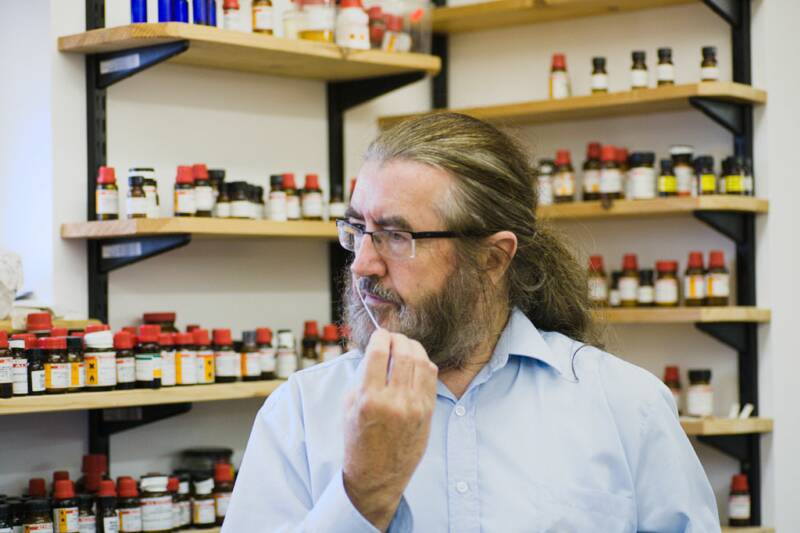


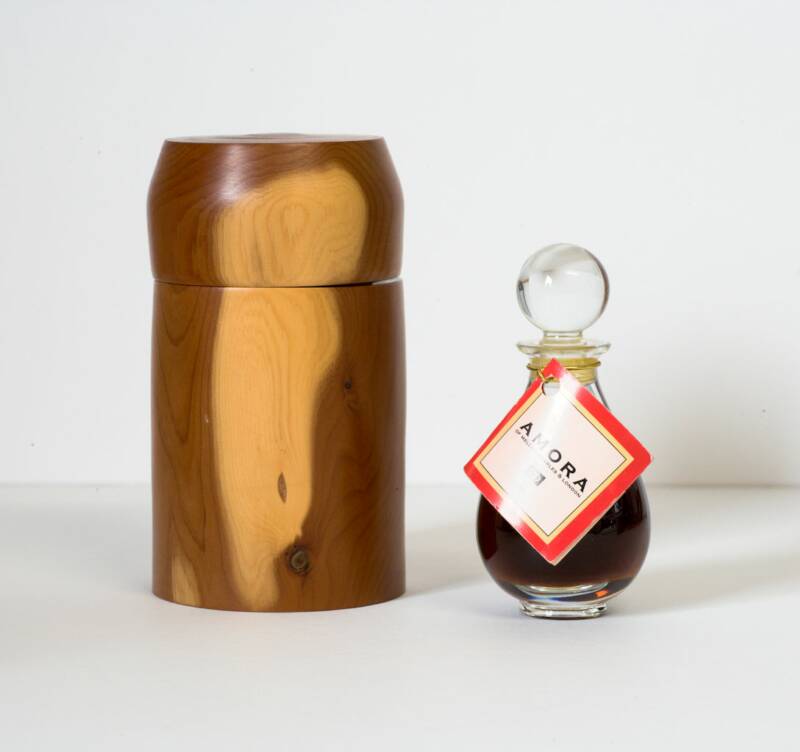
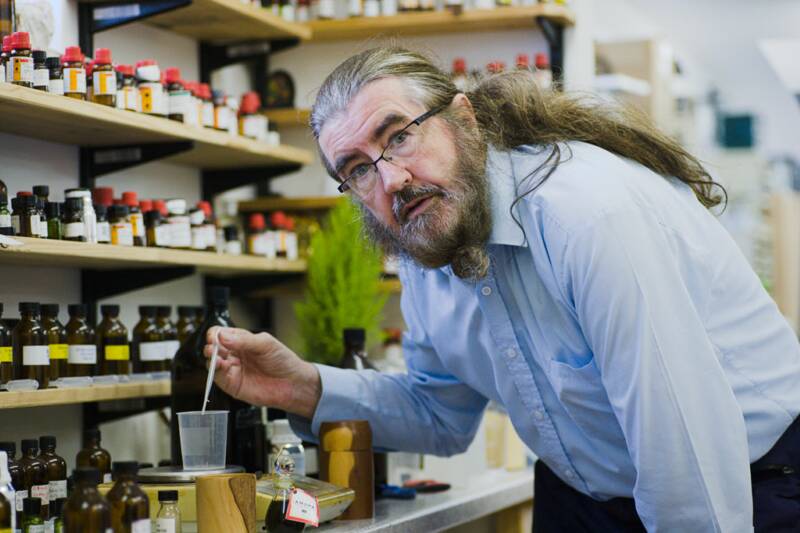
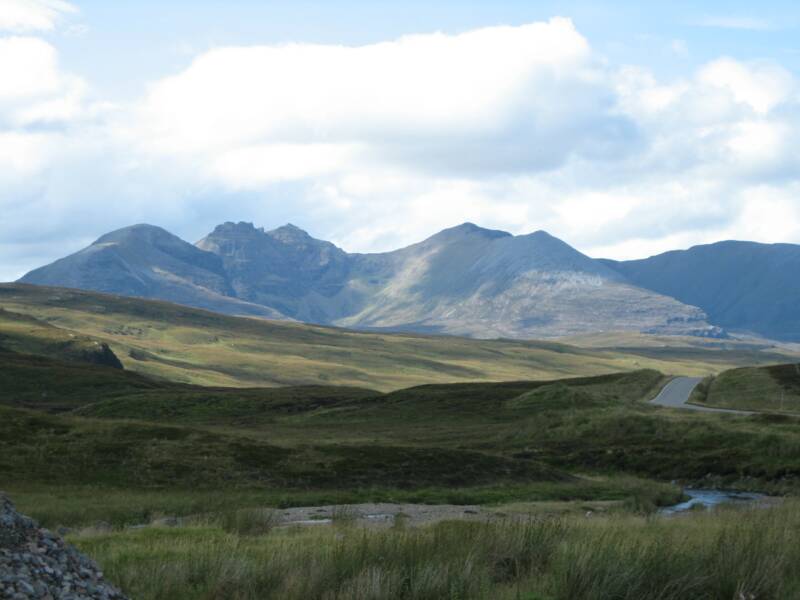
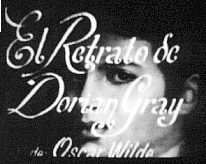

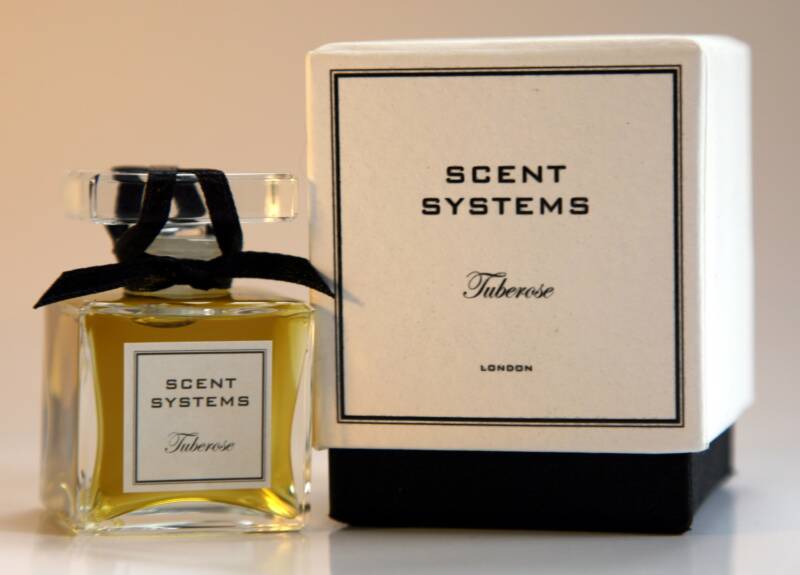
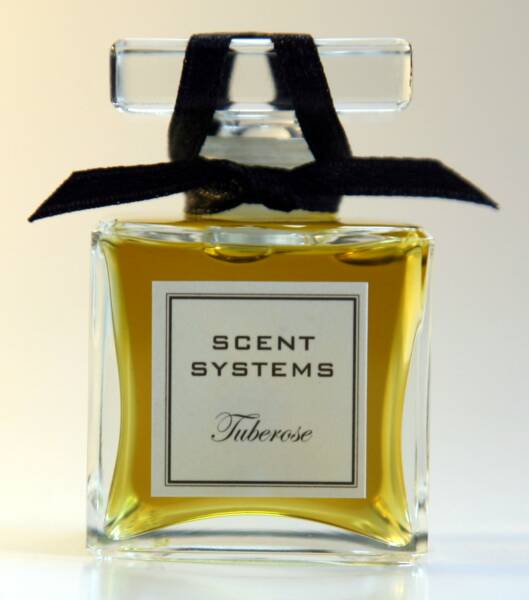


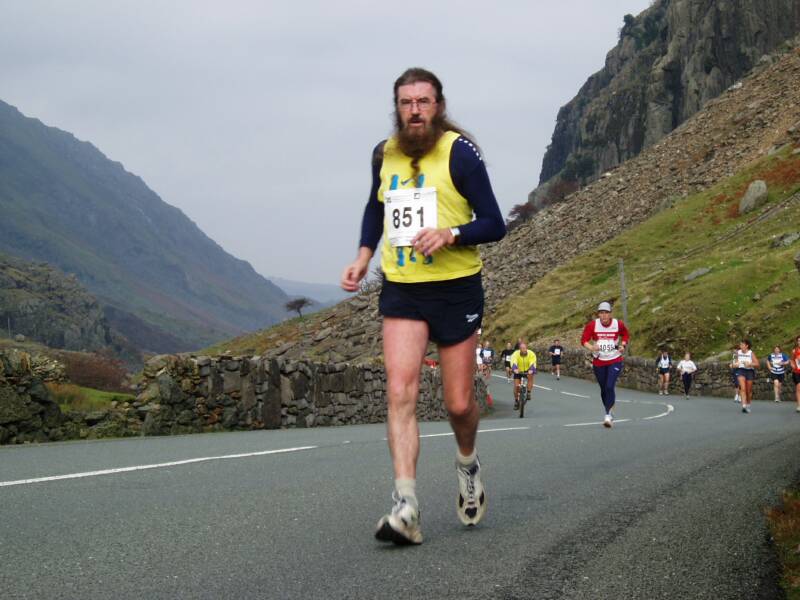
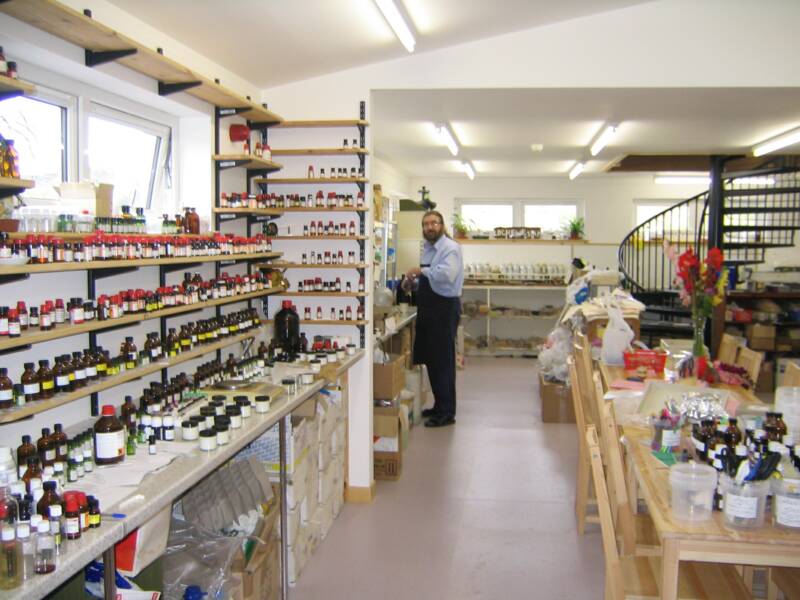
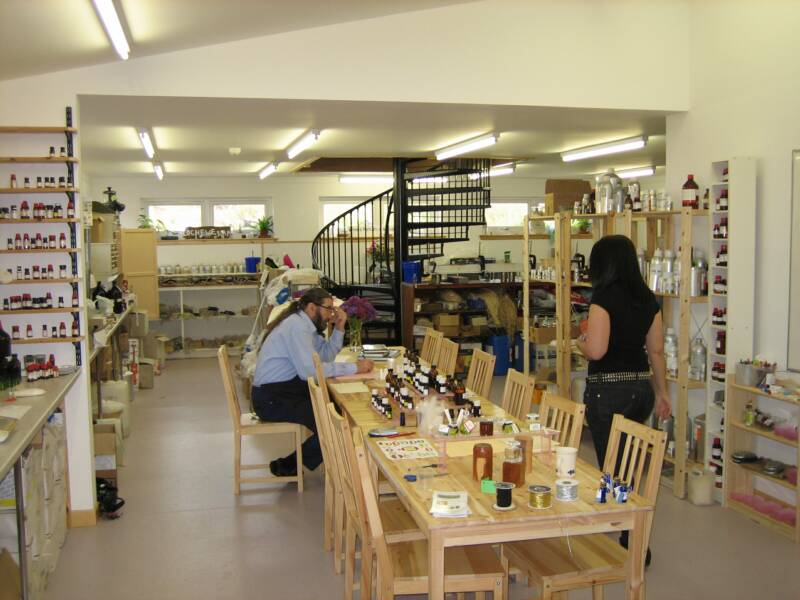
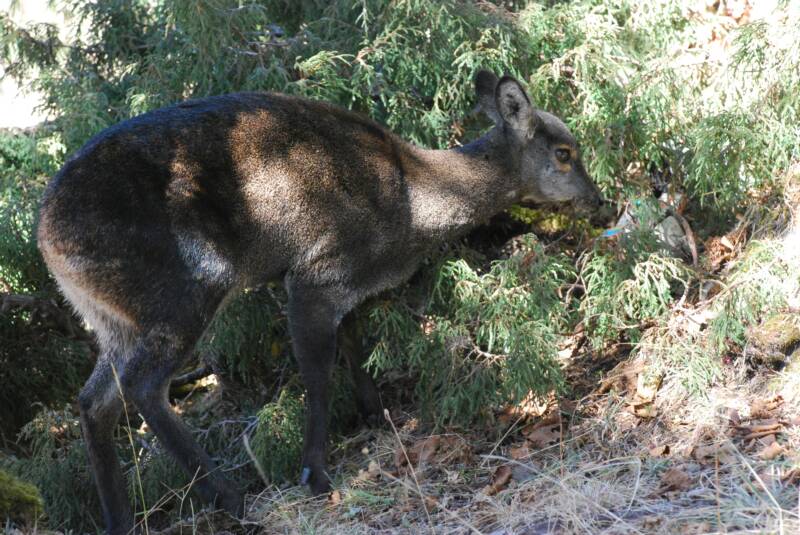

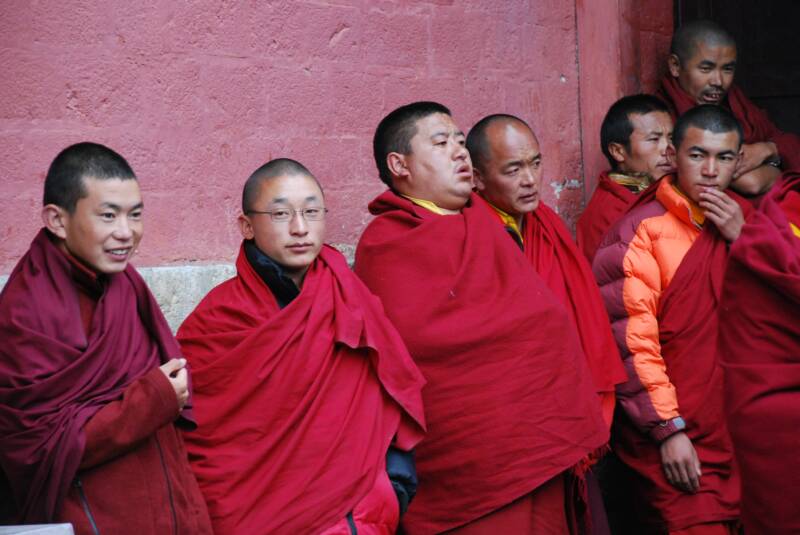
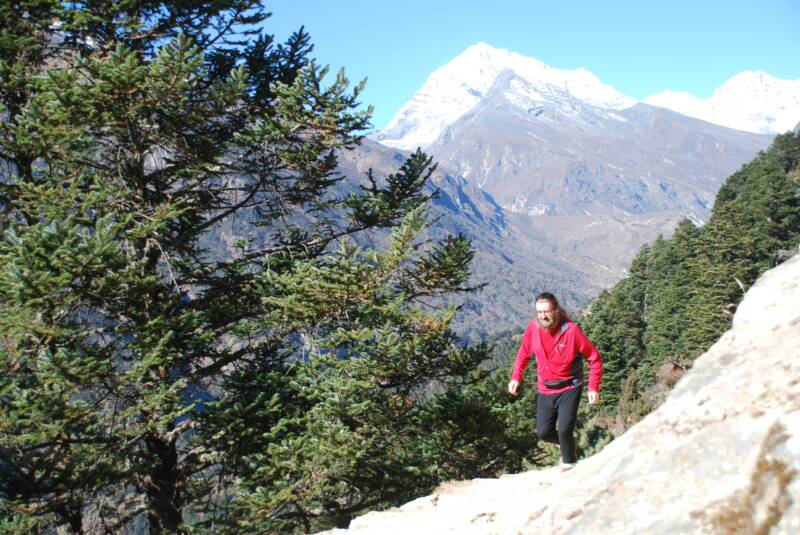
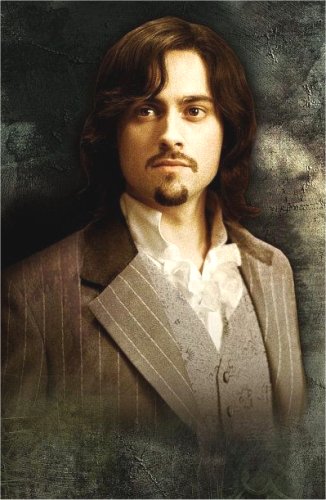

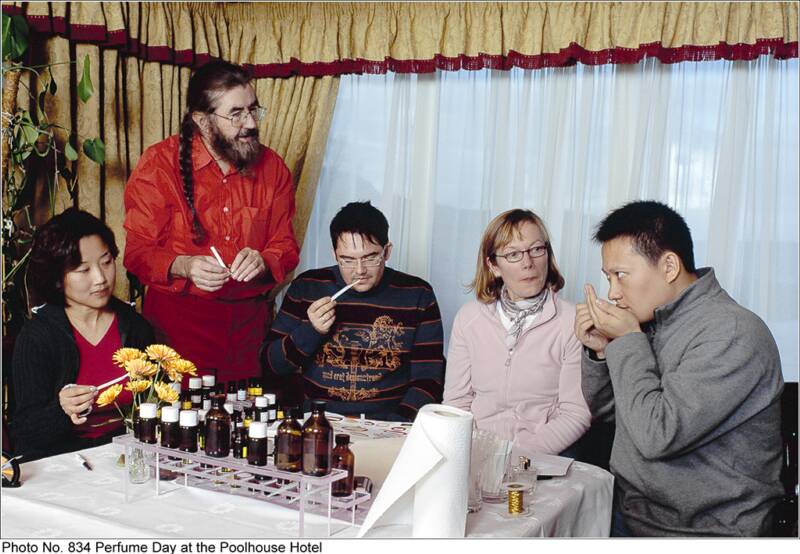
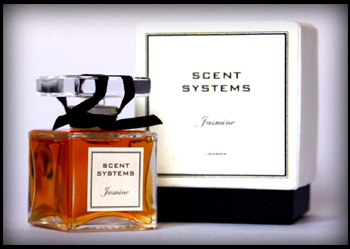
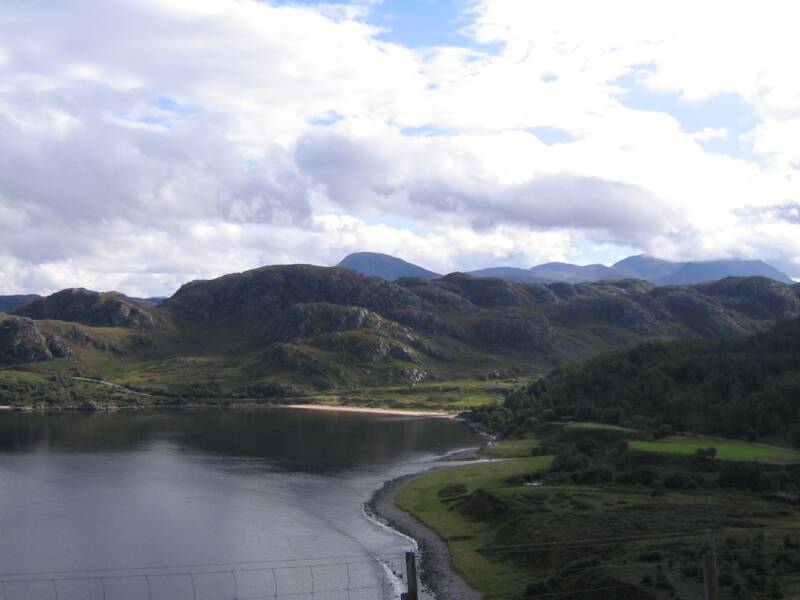

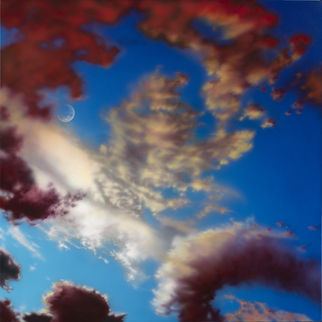
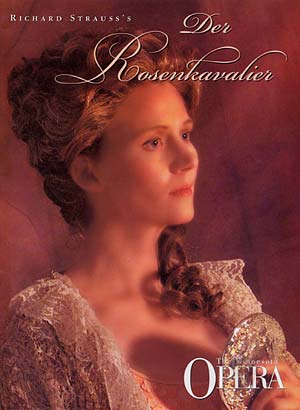
It is difficult to explain to the rising would-be perfumers of today, just how dispiriting these interviews were. Old-fashioned values of a kind that seem incredible still prevailed. The attitude, even in companies such as Givaudan, was that we will take you on and you will work with a single perfumer; doing quite menial work in the factory at first; and eventually; you might have the chance to become a perfumer. There was no programme of education; no perfumery courses to attend; and most of what you will learn will be from one man who had started in this way. I simply could not stomach the notion of spending years like this, in an intellectually barren atmosphere; devoid of a really creative spark; and in what was then a non-feeling culture. What was really galling; especially in my Givaudan interview; was that I appeared to know more about perfume formulae and aroma molecules than the man who was interviewing me; and I certainly felt that I had a literal passion for creating new and exciting things in perfumery – a feature which I did not sense in any of the people who interviewed me. I diverted to the University of Oxford and did research for a D.Phil. The topic was a tad esoteric then but is mainstream now – protein receptor molecules. Indeed, right at the moment, I am engaged in a mesmerizing research project which connects protein receptors to perfumes: a topic which I believe is going to allow us to create revolutionary new types of erotic perfumes.
Then followed three years working for Unilever; a corporation which in its time owned many famous perfume brands and a major perfume house which later became Quest (recently acquired by Givaudan). The then doyen of the British perfume scene, Jimmy Hackforth-Jones, was one of my perfume mentors during this period. I jumped back to Academia in 1971; joining the University of Warwick; teaching advanced biochemistry, and founding the Warwick Olfaction Research Group. From 1971 until 1994; the year I left; this was one of the prominent international research groups working on smell. This group pioneered many fields which are still flourishing; including artificial nose technology (electronic noses); the psychology of perfumery; and the molecular mechanisms of the sense of smell. As you can imagine, these were heady topics to intertwine with my love-affair with fine perfumery.
Goodness knows how I found time to do it; but in 1978; whilst I was a full-time academic with a flourishing research group; I started my first perfume shop – Craft Perfumes – in Stratford-upon-Avon; the birthplace of Shakespeare. Here I created a range of original fine perfumes and I started that aspect of perfumery which touches me most and which I still continue today – the creation of personal perfumes. This is what I believe to be ‘real’ perfumery; probing the spirit and psyche of a client; using diagnostic scents and smells; and building-up an understanding of what really ‘turns-them-on’. In passing, I note that several perfumers now claim to be the originators of the field of personal perfumery. Few perfumers have been doing for the past 30 years.
With regard to what is now the fashionable arena called natural perfumery (a title which drives some prominent journalists into wild paroxysm of confusion) – this is the course I took. We jump some decades to the year 2000. I created a perfume studio in a wild place on the north Atlantic coast of Scotland. This is still one of the few independent perfume studios in the world. I had the straightforward ambition of creating new types of perfumes with the finest ingredients available.
Space does not permit us to indulge in a mighty discussion of what constitutes the ‘finest’ ingredients we find in a perfume studio. I look to the psychology of perfumery for inspiration and I note that our noses revel in the sensuousness of complexity. The most complex natural oils; the esoteric absolutes display incredible chemical complexity and they give wonderfully sensuous aroma effects. So I created several ranges of what I call sophisticated entirely natural perfumes. I am ironically obliged to use the term sophisticated (which I would normally abhor since I believe that smells and smelling and perfumes are intrinsically simple and natural activities) because every second Aromatherapist around the world now hurls an odd medley of cheap essential oils into a bottle and calls it a natural perfume.
If you take the Amora range; described on our site www.aromasciences.com ;
to my knowledge one of the first modern ranges of sophisticated and entirely
natural perfumes; they are constructed using all of the principals of classical
French perfumery; using all of the guile and insights which only experienced
professional perfumers have. These perfumes are ‘real’ perfumes; full strength,
of course; and they contain natural oils which have been distilled using special
modern methods of distillation and so give strikingly original odour nuances.
You will be amused to know that we encountered a curious problem when
we demonstrated these perfumes to contemporary young journalists in the UK.
Firstly, most of these young women (young girls if truth be told) have little if any
familiarity with perfume and even think of EDP as perfume. So they had absolutely
no background in evaluating (full-strength) perfumes when they came to pronounce
on these perfumes. And since these perfumes use the costliest and most exotic
ingredients; the perfumes have an unrivalled richness and sensuousness. In fact
they behave like vintage wines; but the journalists simply had no ‘nose’ for dealing
with such rare and complex and rich perfumes. I had to sit down and teach them
about the elements of fine perfume before they could even begin to appreciate such
fine quality. And pleasingly, once their noses had been initiated into the realm of
complex natural perfumes; they could begin to appreciate the utter luxury of such
products.
One way in which I could get them to understand these perfumes was by reference to fine wines. One night some time ago, my son and I tasted three bottles of claret in the course of an evening – purely as an exercise in wine perfumery; of course. The first bottle cost us about $10 and was perfectly drinkable. The second cost about $100 and we reckoned that its aroma was some 1.5 times that of the cheaper bottle. The third bottle, a celebrated vintage from a fine cellar in Edinburgh cost us about $1,000; and our pleasure in its rich vintage bouquet persuaded us that its scent and aroma value was some 2.5 times that of the first, cheaper claret. A sense of morality forbade us to pursue the next level of aromaticity; but I guess we might have given it a relative aroma value of between 3.5-5.0.
I think that similar comparisons apply to fine perfumes. The telling feature of our claret experiment is worth reporting. Once you taste a fine vintage wine, you fall love with its sheer richness of sensory experience, and you notice a lack when you indulge in a cheaper version; even though you have previously enjoyed this cheaper version. The same applies to fine perfume; I think. I have also created natural perfumes for other companies. The range of natural single floral perfumes I created for Scent Systems of London, are described elsewhere on this site.
Raphaella: Dr. Dodd, tell me what you love about fragrances, why is it important to all of us?
I come back to my mantra (I call it mine because I have never heard anyone else say this) – that perfume is the art of the sense of smell (it encapsulates my two great passions – making perfumes and understanding the mysterious sense of smell).
I love P words – and two of my favorites are Perfume – and Passion. We begin life by breathing in the scents around us (a big topic for another time)
I love people who have a passion; some intense, captivating driving force which gives meaning and impetus to their lives. Perfume is, in the most simple sense; one of my passions. I adore the intense feeling which smells can induce. My scientific colleagues, who see only the science man; would be surprised at this intense feeling artistic part of my being and life, If you feel the following sentiments – intensely – you will know what I mean. These feelings are ineffable – we must smell and experience – smell is a language onto itself and it is an artificial construct to try and express in mere words what our hearts experience with magical scents.
I often feel that the perfume industry has lost its soul in the late 20th century; with ephemeral celeb fragrances of no distinction and an utter disregard for the proper place of the sense of smell in our daily lives.
Your perfume wafts me thither like a wind;
I see a harbour thronged with masts and sails
Still weary from the tumult of the gales;
And with the sailor’s song that drifts to me
Are mingled odours of the tamarind,
And all my soul is scent and melody.
- Baudelaire
‘And so he would now study perfumes, and the secrets of their
manufacture, distilling heavily-scented oils, He set himself to discover
their true relations, wondering what there was in frankincense that made one mystical,
and in ambergris that stirred one’s passions, and in violets that woke the memory of
dead romances…and seeking often to elaborate a real psychology of perfumes, and to
estimate the several influences of sweet-smelling roots, and scented pollen-laden flower,
of aromatic balms, and of dark and fragrant woods.
-Oscar Wilde, The Picture of Dorian Gray
Raphaella: You have written a book titled, “Fragrance: The Psychology and Biology of Perfume”,
is this available in America?
Raphaella - as with all your questions – pivotal points for contemporary perfumery – I could write a book in answering any one question – so just a few points - in outline for the rest of your questions. One of the highlights of what I hope will be a long career exploring the pleasures of perfume; was the opportunity to formally found a new field – the Psychology of Perfumery. My ‘bible’ when I was an early student of perfumery was the insightful book – The Practice of Modern Perfumery – by the German perfumer Paul Jellinek (translated into English in 1959, by the English perfumer A.J. Krajkeman, who at that period wrote some interesting articles on new aroma molecules in perfumery). Jellinek; whom sadly I never met (but got to know his son Stephan who, obviously inspired by his father went on to do some magnificent work on the classification of perfumes) was one of the few perfumers who had an intellectual curiosity about the underlying biology of perfume.
Jellinek’s book inspired my life-long interest in the science behind the intense and deep pleasure many of us get through perfumes. In 1983, I wrote an article for Perfumer & Flavorist 8, 1-14 (The Psychology & Biology of Perfumery). Now that there is much more public information about the science in perfumery; it must be difficult for readers to comprehend the kind of ‘hate mail’ I received from senior commercial people in the perfume industry; following the publication of this article. Now, nearly, 25 years later; we have come almost full circle and the industry is really interested in such questions as how the human genome project can give rise to dramatically new things in perfumery. Steve Van Toller and I organized the first Psychology of Perfumery conferences; and they literally kick-started much of the work which is now reported from the Fragrance Association and other bodies.
Planning for the next Psychology of Perfumery conference has started.
The references to the conference books – now regarded as seminal texts in the field (though it is also pleasing to note how much new work is now coming through, inspired by our founding efforts) – are on our web site – www.aromasciences.com (under our perfumer).
Raphaella: Many of us are fascinated by the psychology of fragrances, care to discuss fragrance addiction? I was told that it does not exist but try explaining that to those who are convinced thay are addicted and are completely obsessed with fragrance. I am talking about persons that are quite well-adjusted otherwise.
I invented the word – perfumophile – to describe such lovers of perfume. These are the folk who come to our studio and our perfume days and who take an elementary delight in taking joy in making perfumes. So-called civilized society (especially the USA, I must say) – is obsessed by cleanliness – and little place it its culture for smells and smelling.
One of my passions is traveling to remote areas (where life is tough and hygiene problematical) – to explore new smells. I am especially fond of the great jungles in West Africa; especially Gabon; and I have just returned from a month’s visit to remote Sherpa regions in Nepal (to see the musk deer). In all of these places; especially the jungles, you are aware of how important the sense of smell is in our lives. I believe (but cannot yet prove) that an intense interest in smelling the world is good for your emotional health – so what is called perfume addiction (maybe better as smell addiction – but I would discount the world addiction) – which I would call perfumphilia – should be encouraged.
Raphaella: Talk to us of the narcotic tuberose…this seems to be making a huge return in the industry.
This has always been one of my favorite notes (an olfactory turn-on; in fact)
from my earliest perfume making. You understand it best when the scent
wafts from the blooms directly to you on a warm tropical evening – when
you did not know tuberose was in the vicinity (the idea of unconscious
smelling – a key idea for perfumes).
It needs much more space to develop this theme – but in brief; the
pronounced narcotic effect of this voluptuous floral scent has a
Distinct role to play in sexual attraction via chemicals (i.e. perfume).
Readers may know that I recently created a range of entirely natural
single floral perfumes (by which word – we mean the original meaning
of the word – i.e. – full-strength perfume) for Scent Systems of London.
One of these is tuberose and always when I sniff it I instinctively close my
eyes and breathe-in the heavenly scent of ‘mistress-of-the-night’. Because
I created the perfume; I know exactly which aroma molecules cause this;
and I know which erotic aroma molecules gently arouse passion – and I
can imagine, like Baudelaire; being in a dark room with a maiden whose
back and other parts have just the right amount of natural tuberose (but
emphatically no more).
I have horrid memories of encountering excessive levels of synthetic tuberose notes in perfumes
of the 1970’s and 80’s – especially on American female executives whose passion
was power-dressing. Their suffocating tuberose notes intoxicated me at 50 yards in
hotel lobbies. This is how – not-to-do-it. Especially with the voluptuous tuberose –
use natural – and go lightly – your lover should enjoy the surprise tuberose effect
when he nuzzles your shoulders, in private – and not Suffer pulmonary damage at 10 paces.
Raphaella: Why do you think so many women (and men) are part
of this fragrance explosion, especially the niche and natural trend?
Two quick points. I and others have been educating the public about perfumes
for the past 30 years (in the UK I hold perfume days etc) – this is something
that the industry has resisted in doing for they are scared that their secrets
(there are no secrets – this is a case of the Emperors’ Clothes) – will be revealed.
Another part of the trend has to do with personalization of products. Almost everyone
would like – what ladies had 200 years ago – a perfume made for them. Most international
perfumes are boring because they have been ‘focused-group-to-death’. So perfume lovers
are now searching for less familiar notes which will not appeal to the most noses. I have been one of the pioneers in recent times of personal perfumes – I have been doing this for clients for over 30 years. This is a gentle perfume education for perfume lovers. The mainstream perfume industry hates this kind of expression of and celebration of our uniqueness as a person (and I have had rude comments about this development – it clearly is a threat to the painted-ladies spraying us with another me-too perfume in airports).
Raphaella: I saw somewhere on the internet that you were asked “Why are some women attracted to ‘dirty’ men”.
Pray tell us, this is so intriguing.
A whole book to be written here (have some of it written). This is what I call the deep psychology of perfume. If you want a clue – hunt-down all of the profound allusions to smells and perfumes in James Joyce’s Ulysses.
I find writing this section frustrating because what I would really like to do is to have all of you readers before me – in the flesh – and I would lead you through a thorough smelling account of how and why this works. This is what I did two weeks ago at the Science Museum in London on the evening of St Valentines Day. ..I was invited by the Museum to hold the world’s 1st Sniff Dating Event. Dirty smells exerted their magic on some members of the audience. You can find an account of the evening (not by me) on the beautiful UK blog site – Perfume Pilgrim.
Raphaella: What exactly is smell therapy?
Many things. I am just starting a charity called –
The Aroma Foundation – which will promote this
activity. Dr John King; who is a psychiatrist and
perfumer; will also be involved. The gist –
Psychiatric patients. Over two years, in a psychiatric
hospital, I sat down with a group of schizophrenic
patients once a week and I taught them how to
create perfumes. Wonderful things – happened –
including an almost Biblical scene in which a
young woman who had not spoken for 5 years
– suddenly rose to her feet and spoke without
interruption for about 20 minutes – and this in
response to an unusual aroma – which plainly
had triggered hidden memories.
It also refers to what I call scientific aromatherapy
(I have been a qualified Aromatherapist for over
20 years). Watch this space.
George watching a musk deer. With friends and musk deer in front.
Raphaella: What is the oddest ingredient you used to your advantage to make a fragrance beautiful?
The incredibly beautiful Azobe flower – which I encountered in the jungles of Gabon. Its scent is incomparably sensuous – and can be smelt miles downwind. The oil is not commercially available.
Raphaella: I have heard that you have interests in the spiritual side of perfumery.
The broad answer is – Yes; but I need to be careful what I say on this one,
because it is potentially confusing. I am as ‘hard’ a physical scientist
as you can imagine; I used to work in the Molecular Biophysics research
group in Unilever, and my research group at the University of Warwick
make pioneering advances in both molecular olfaction and in electronic
nose technology; in addition to the ‘soft’ science of perfume psychology.
But like all of us, I have a curiosity about the world in which we find
ourselves (am a big fan of Richard Feynman {would love to have been
around in his lab} – and just in case anyone does not know this;
Feynman; in a very Feynmanesque way, used his sense of smell
to solve an interesting problem (described in one of his popular books).
I have been a fully qualified Aromatherapist for over 20 years {an activity
with a so-called ‘spiritual’ fringe which still believes that the molecules in
perfumes have a ‘life force’ {see my view on this (as a molecular scientist)
in Perfumery: The Psychology and Biology of Perfumery (eds) Steve Van
Toller & George H Dodd; Chapman and Hall; 1988} and to this day; to the
best of my knowledge; no cogent evidence against the mainstream scientific
views on molecules and life forces (to which I subscribe) have been produced
by Aromatherapist’s.
On the UK scene, I have been the friendly face of science in several areas of complementary and alternative medicine during the past 20 years, happily giving talks to well-meaning and lovely folk who often believe that their essential oils have souls or are connected with angels. I give a simple account of our smell molecules and of how their size and shape and electrical charge allow us to understand their wonderful aromas (as we all sniff these molecules floating to us through the air – the most intimate contact our brains have with the outside world).
The word – ‘spiritual’ is used widely in complementary medicine. This is one of the trickiest words around – meaning all things to all people. I commend the definitions found at the web site of the Royal College of Psychiatrists in the UK www.rcpsych.ac.uk ; go therapies to the topic of spirituality and mental health. Here you will find such points; of pivotal interest to all of us; as in healthcare, Spirituality is identified with experiencing a deep-seated sense of meaning and purpose in life; together with a sense of belonging. It is about acceptance, integration and wholeness.
Spirituality, described as ‘linking the deeply personal with the universal’, is inclusive and unifying....
A helpful way to begin (...an assessment of the spiritual aspects of a person’s life...)...is simply to ask – ‘what sustains you? Or ‘what keeps you going in difficult times?
What have such pointers to do with perfume? Well, never forget to remind yourself that scents were invented by Nature and not by wo/man. You should take yourself to wild, untamed places and use your nose to tune-in to Nature. We have not evolved to endure the noise and crowds of shopping malls, where painted ladies squirt you with appalling fragrances; with high levels of cheap synthetics; frequently in inharmonious accords which literally make you weep.
For a healthy sense of wellbeing (i.e. the essence of spirituality) take yourself to the natural scents with which our sense of smell has co-evolved. Revel in the life-enhancing aromas in woods on a warm summer’s day; breathe-in the scents from the ocean as you watch the waves on an empty wild beach; notice the cool aromas of the high mountains; and count the number of different types of green scents you can detect as you walk gently through the fields and forests.
When the going gets tough; then use your nose and natural scents to calm down your
fevered imagination and so regain composure and poise.
This is how we have been designed.
A something in a summer’s noon –
A depth – an azure – a perfume –
Transcending ecstasy
- Emily Dickinson
The smell of violets, hidden in the green,
Pour’d back into my empty soul and frame
The times when I remembered to have been
Joyful and free from blame…
-Tennyson
Raphaella: Do You Ever Fantasize About Perfumes and Aromas?
Of course; all perfumers dream of their perfumes-in-creation; and some of us can while away many an hour whilst smell-dreaming about new and fantastical aromas. But at the risk of badinage about my psychological inclinations; let me tell you about one of my favorite perfume fantasies.
I am sitting at a magnificent marble dais; with wise perfume women and men on either side of me; along with numerous scribes (equipped with state-of-the-art computers and data bases, of course). Before me stretches a vast hall, so great that I can hardly see the wall at the other end of the room. There are many open windows and the sun is shining and the temperature of the very gentle breeze coming in is just right for our sensitive nostrils.
A great line of liveried footmen and women parade up this great hall towards my left-hand side. Each bears aloft, a silver salver on which is place a small bottle containing some new smelly molecule; along with information on the structure of the molecule and its perfume properties. My wise companions and I eagerly examine each odorous wonder; commenting on the possibility of as yet undreamt-of accords; noting any resemblance to familiar aroma molecules; and all of us letting each aroma molecule speak to our souls. The scribes devour our words and enter all the details into a vast scent data base we are compiling. New algorithms search for the secret of each molecule and its innermost electronic secrets.
We spend all of our days thus; save for those days in which we examine the many new perfumes and accords which the new computer programmes suggest to us.
We live for ever in this sensuous scentful world; as entropy and the arrow-of-time ply their way. We sometimes speak to each other in a quiet voice and wonder whether there could ever be a finish to such loving labors; and we take comfort always in the Borgesian Tlön, Uqbar, and Orbis Tertius.
Raphaella: I have never heard of an Irish perfumer before now – has being Irish made any difference to your perfume explorations?
I was born in Ireland; left when I graduated from University; already proficient in perfumery; and I have lived another 1/3 of my life so far in England; and getting on for that in Scotland – so I now feel somewhat of a stranger in three countries; but with definite Celtic spirit and temperament.
As you fly over Ireland; you cannot but laugh at the cliché of this tiny island being the ‘Emerald Isle’. It is stunningly verdant with its luscious green fields; cows; and prime racing horses. I think that it is no coincidence that as a perfumer I am instinctively drawn to green notes; they are infused into my Irish bloodline.
In late 1960s; I was trying to figure-out how our sense of smell worked right down at the molecular level; the fundamental level of perfume molecules. My colleagues and I in the Molecular Biophysics group in Unilever were studying how perfume molecules affected the then novel and curious, liquid-crystal properties of the lipids which occur in the sensing membranes of our sniffer cells. Exactly at the same time; but I did not know it; Henri Robert; building on the previous work of Germaine Cellier who had created the stunningly green Vent Vert; was working on one of the great green perfume of all time – Chanel No 19. Please do go and smell this perfume; if you have done not so recently. It is a classic. How I would have loved to be Robert’s assistant; and being midwife to the family of floral green perfumes.
I love my green hexenols; and the more subtle green heptenols; and the complex fruity green octenols; along with all of their esters – all bringers of green joy into our perfume lives.
And of course, I love my galbanum absolute; as used by Robert; and both as a smell scientist and as a perfumer; I too pay homage to the alkylmethoxypyrazines and their ilk; the hidden heart of this life-energizing absolute. I have even made radioactive versions of some of these precious green molecules; in attempts to harness the elusive receptors. Incidentally; readers who are unfamiliar with the insides of a perfume studio, might like to know that such powerful green pyrazines must be stored in a bottle within a bottle and within yet another bottle (and often with the lot in a fridge) ; such is the extraordinary power of these key-impact-odorants. And when you are working with the 100% concentrated materials; all your friends of an evening; know what you have been doing during the day.
Another aspect of the Irish heritage also touches my life. During the Dark Ages in Europe; after the fall of the Roman Empire in about 476AD to about ~1000 AD; Ireland; then the land of ‘Saints and Scholars’ kept the flame of learning alive in Europe. And a love of learning and education is a traditional feature of Irish Culture. In my own modest way; I tune-in to this strand of my heritage; and I love teaching folk about perfumes. Actually; teaching is quite the wrong word – I simply lead people to the experience of perfume by actually making perfumes. Just as cookery is an active domain; so I believe that perfume is really perfume-making and is also an active domain. Over the years I have given all manner of perfume days and the like at which people end up creating their first perfume. What a shame it is that the mainstream perfume industry has not embraced just a smidgen of the love-of-learning for which the Irish are famous.
A third strand of my Irishness has to do with the rich literary tradition of the ‘ould’ country.
You want to know about the dark underside of your sense of smell?
Then go read James Joyce’s Ulysses.
You want to know about the motivation which makes us perfumers strive for
aesthetic perfection with our clusters of fragrant molecules? –
Then go read Oscar Wilde -
‘And so he would now study perfumes, and the secrets of their manufacture, distilling
heavily-scented oils, and burning odorous gums from the East. He saw that there was
no mood of the mind that had not its counterpart in the sensuous life, and set himself to
discover their true relations, wondering what there was in frankincense that made one mystical,
and in ambergris that stirred one’s passions, and in violets that woke the memory of dead
romances, and in musk that troubled the brain, and in champak that stained the imagination;
and seeking often to elaborate a real psychology of perfumes, and to estimate the several
influences of sweet-smelling roots, and scented pollen-laden flower, of aromatic balms, and
of dark and fragrant woods, of spikenard that sickens , of hovenia that makes men mad, and
of aloes that are said to be able to expel melancholy from the soul’.
- The picture of Dorian Gray
Stuart Loch Ewe outside George's laboratory and perfume studio
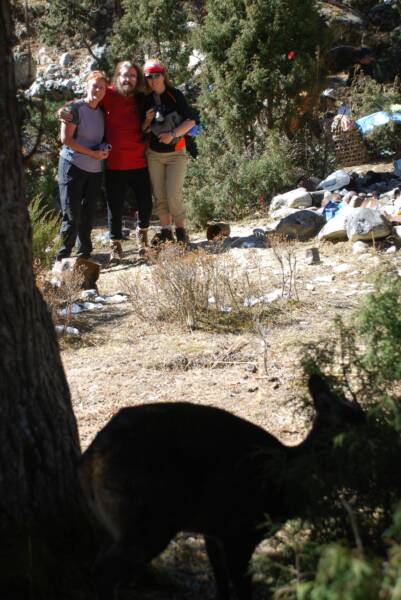
Outside Dr. Dodd's studios
General views from perfume studio - on a wild Scottish sea loch - looking out to the magical Hebridean Islands of Harris and Lewis. We have otters and many kinds of diving birds right outside our studio and you can walk for 8 miles along wild sea cliffs; and the chances are that you will not meet anyone. Is there a perfume studio; anywhere in the world - with cleaner air. On most days of the year we have visitors who will enjoy a superb cup of flavoursome coffee and who might very well elect to spend the afternoon in a small group of people, as each is guided through the creation of a personal perfume. This is real perfumery.
Raphaella: Tell me something about the things you like to do when you are not in the perfume studio....
I love mountain running.
One photo shows me
running my 25th
Snowdonia Marathon;
the toughest marathon
in the UK. Last
year in November I
ran Everest Marathon.
When my body is
warmed-up when running
on a mountain;
and my mind is
quietened; and I am
running gently down-hill on
a good track - I often
dream about new perfumes.
I also love the joy of
flying and have a pilot’s
license.
I swoon at the Opera -
last 20 minutes of Der Rosenkavalier is a sustained bout of erotic tension - such as I would like my really erotic perfumes (think Amora perfumes here) to induce in the wearers. I want to be a tenor in my next life.
Raphaella: Dr. Dodd, thank you so much for talking with us, is there anything you wish to add for our readers?
We are holding what we think is the world’s 1st professional perfume
course for perfume lovers who want to start their own business (and concentrating on sophisticated natural perfumes) –
In September 2008, I am running a 6 day course for folk who would like to set-up their own perfume business - but you don't have to have a business interest to enjoy such a course. These courses are unique – they are held in a real live working perfume studio. The course is not just smelling and talking - but actually making real perfumes and learning the secrets of the perfumer - The courses cost ~£3,000 (including various smell kits etc but not including hotels etc).
We have accommodation nearby for everyone - from simple B&B to some exclusive hotels (Google Poolhouse and you will know what I mean).
Perfumery in another guise – I have just created the world’s 1st Scotch Whisky Aroma Nosing Kit (see www.scotchwhisky.net). Last year I created a beautiful perfume (sniffer’s tell me this) inspired by single malt whisky – but this has not yet been marketed – we are looking for commercial partners.
A few years ago I created the world’s 1st Medical Perfume for a pharmaceutical company. This is called – Scentuelle –
One of my passions – which will start this year – is to create a world amateur perfume movement. Kits are in preparation.
You might be interested to know that I also was in London for the world's 1st Sniff dating event - which the Science Museum in London asked me to organize for the evening of St Valentines Day. The evening was a wonderful blend of science and scent - we had a full house - it was potentially chaotic because it was live and interactive - but actually some amazing things happened. This was I think a landmark event in the history of perfumery - and an indicator of things to come in perfumery.
I admire the sheer energy and gutsiness of your wonderful site - congratulations. I hope that gradually you can start to get behind the fierce PR facade of the perfume business and bring some homely American honesty and genuineness into the light of day.
And last- To all – keep on sniffing – with every breath you take in.
- Dr. George Dodd
Dr. Dodd, you are an incredible source of wonder and appreciation, thank you!
A special thanks to Hiram Green, George Dodd's partner,
Dr. George Dodd and Prince Barry
George collecting fresh blooms from Scottish gorse or whin, which grows abundantly in the Highlands. The scent is easily recognisable and has a heart-stopping honey and coconut accord on a green floral background. Visitors who come walking to the wild regions of the Scottish Highlands love the distinctive scent of this flower - especially taken on the wind in a wild valley on a warm summer evening.
Hiram Green of Scent Systems
